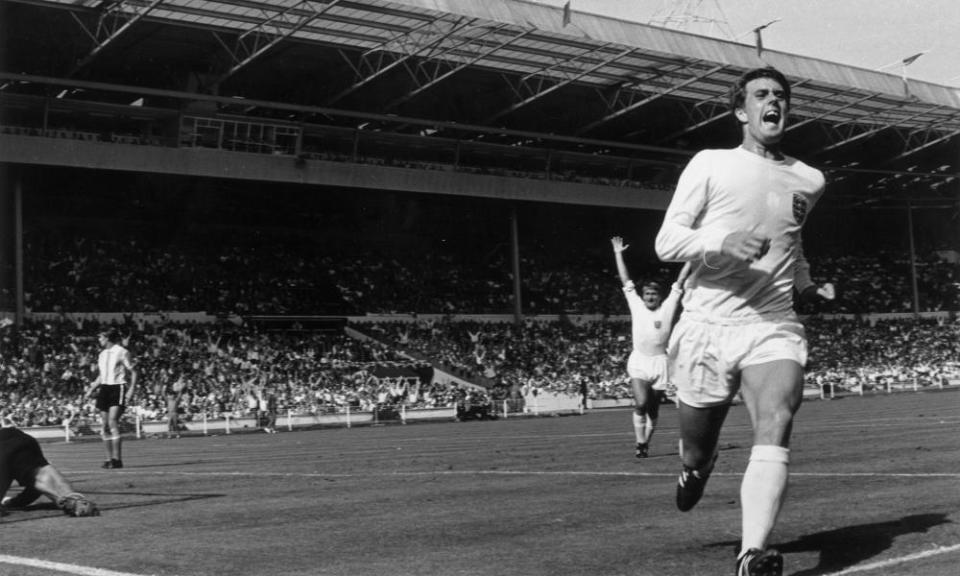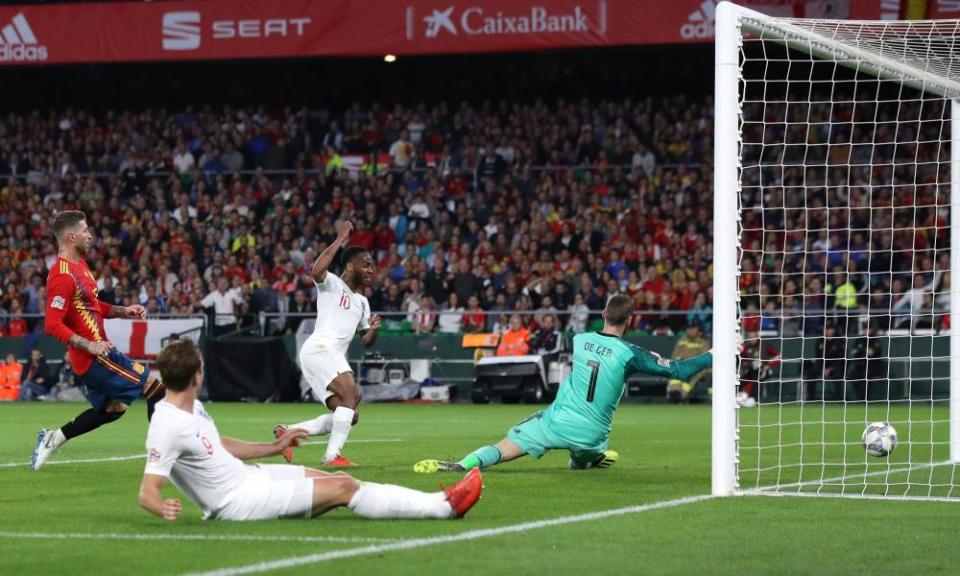Stubborn, controlled, deaf to critics: there’s plenty of Alf Ramsey in Gareth Southgate

Alf Ramsey was not a man much given to drama, but when he read out the team for England’s final warm-up friendly before the 1966 World Cup, away to Poland in Chorzow, the players noted a distinct pause before he delivered the 11th name.
Alan Ball was in on the right, so everybody assumed that meant a conventional winger on the left, probably Terry Paine. But Ramsey’s grand reveal was a genuine surprise: Martin Peters. As he had against Spain the previous December, Ramsey was going without wingers. For only the second time in history, England would play 4-4-2.
Related: Gareth Southgate hoping for a final thumbs-up in the Colosseum
Less than a month later, that same 4-4-2 carried England to victory against West Germany in the World Cup final. Ramsey was a cautious and reserved man and, perhaps because he never saw the need to explain his thinking to the media, his tactical radicalism was undervalued. But he was also clever and cunning. He had seen how football was going. He knew that the advent of the back four was diminishing the impact of wingers and saw the greater value in having a numerical advantage in midfield.
After the 2-0 win in Madrid in December 1965, he put his new system away and only brought it out again six days before England’s first game at the World Cup. He was confident nobody would be watching; what happened in Silesia stayed in Silesia. And then he hid the 4-4-2 again.

England in 1966 were widely criticised for their performances in the group stage: a 0-0 with Uruguay and workaday 2-0 wins over France and Mexico. “It was negative, negative, negative, England bereft of ideas – as if playing a game they had never attempted before,” moaned Peter Wilson in the Mirror after the opening game. “If the competition continues like this, I suggest they change the design of the Cup into an urn – a funeral urn.”
Ramsey didn’t care. The group was about progressing. Nobody remembered how you did it. He played a 4-3-3 in each group game, using a different winger in each – John Connelly, Terry Paine and Ian Callaghan. But that was the phoney war. The real tournament only began with the quarter-final against Argentina, when he unveiled the 4-4-2.
That was a brutal game that hinged on the (bewildering) dismissal of Argentina’s captain, Antonio Rattín, 10 minutes before half-time. The crowd at Wembley was frustrated. It wanted England to go for the kill. Journalists the following day seemed baffled England had not finished the game off sooner. But Ramsey was patient: he believed his plan would work against 11, so it was certainly going to work against 10. Sure enough, with 11 minutes remaining, Geoff Hurst glanced in the winner.
Fifty-five years later, as England prepare, at last, for another major final, there are parallels. That was a different world, of course. There was far less discussion of tactics. Even many coaches were wary of over-intellectualising the game. Ramsey, the first England manager allowed to do the job alone, without committee, could have brought a blackboard out and explained exactly what he was intending to do and the story would not have been the intricacies of the midfield but the eccentricity of the England manager.
Download the Guardian app from the iOS App Store on iPhones or the Google Play store on Android phones by searching for 'The Guardian'.
If you already have the Guardian app, make sure you’re on the most recent version.
In the Guardian app, tap the yellow button at the bottom right, then go to Settings (the gear icon), then Notifications.
Turn on sport notifications.
This, too, is an England that won two and drew one game in the group and went through without conceding. This too is an England that didn’t concede until their semi-final. This too is an England founded on control with a stubbornly determined manager who has ignored criticism from those who have urged him to be bold.
And this too is an England with a tactical plan they didn’t unveil until after the group stage. Southgate had used a back three at the World Cup before switching to a 4-3-3. At the time that seemed a logical progression, moving to a more attacking, more sophisticated style as the team matured. It brought the 3-2 win in Spain that, until this tournament, probably represented the high-water mark of Southgate’s reign.

But it also looked vulnerable defensively, as seen in the 5-3 win over Kosovo and the defeats to the Czech Republic and the Netherlands. So Southgate last year went back to the back three. Results were mixed, although they might have looked rather better had it not been for Harry Maguire’s red card against Denmark at Wembley. And then, abruptly, the back three vanished in March. Perhaps that made sense in the context of the World Cup qualifier against San Marino, but it seemed a risk against Poland (and only a late winner prevented England dropping points after a soft concession).
There’s no suggestion Southgate was performing the same subterfuge as Ramsey. It seems not to be in his nature and probably wouldn’t work anyway in the modern media landscape. But the back three remained in the background, ready to be deployed when required against Germany. It’s possible it will come out on Sunday against Italy.
But whether Southgate goes back to that or sticks with the back four, he has, like Ramsey, recognised a basic truth of tournaments that the utopian demands of fans and media often ignore: there are the games you have to get through, and the games you have to win if you’re to progress deep in them. There are no arbitrary abstract demands for a particular style or type of player, no sense of “knowing his first XI”, no picking his best players and letting them get on with it, no pandering to egos: there are just, within a general tactical framework, a series of games, each one to be approached in its merits in turn.
Related: How Pep Guardiola and Marcelo Bielsa primed England for glory
It sounds simple, but then, as Johan Cruyff observed, football is a simple game; it’s the making it look simple that’s difficult. By the end in 1966, even Peter Wilson was won over, hailing “the English Valkyries” and saluting a triumph that had his “heart pounding”: “But in the hurricane there was one quiet Englishman – Alf Ramsey. No doubt he was remembering his finest hour but remembering … there’s nothing so becomes a man as modest stillness and humility.”
There are parallels.

 Yahoo Sport
Yahoo Sport 





































